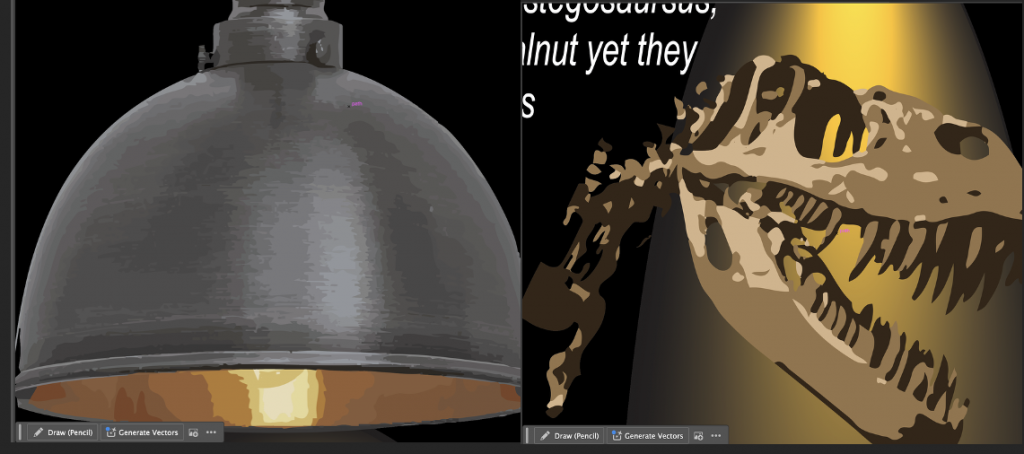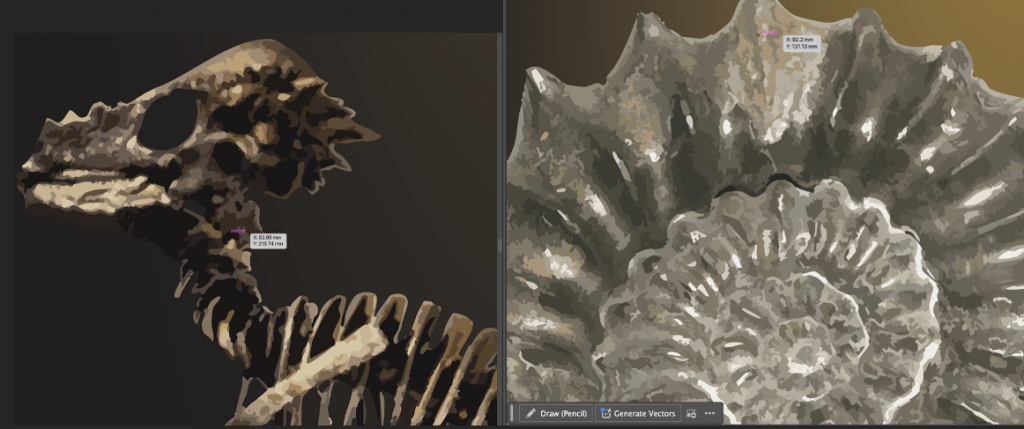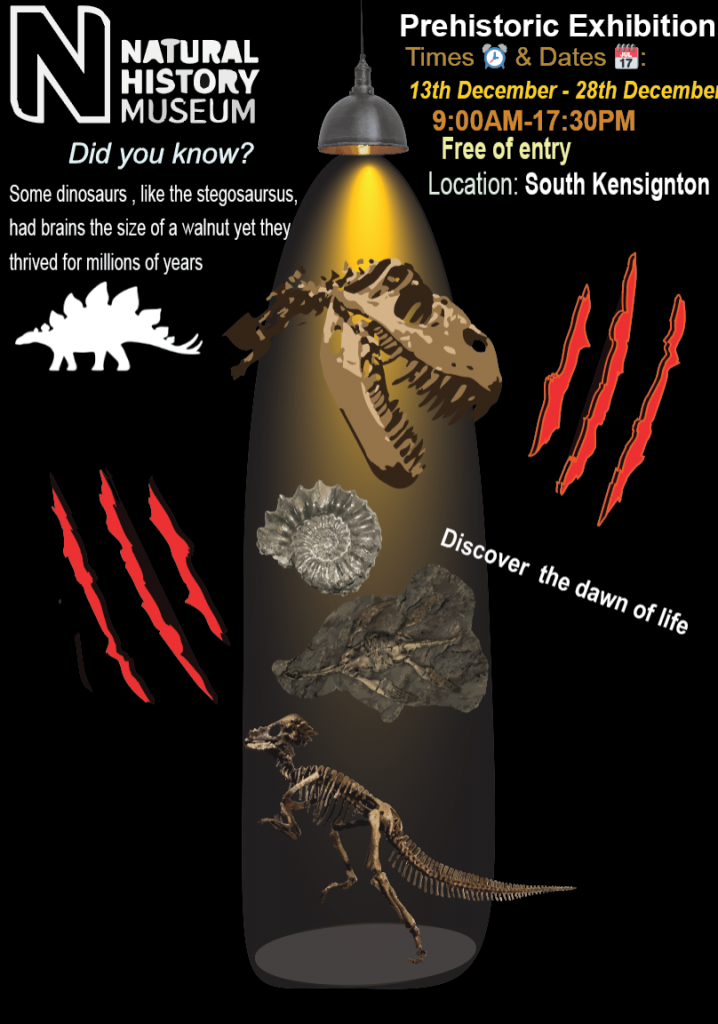This report details the development of a graphic design poster created to advertise the Natural History Museum. The design process begins with a 2D concept.
Additionally, the report will cover the various techniques and skills applied throughout the creation of the poster, highlighting both the artistic and technical aspects involved in bringing the design to life.
Development of the Graphics Design Poster

At the start of the graphic design process, a new layer was created matching the exact dimensions of the original template. This layer was carefully aligned with the template to ensure perfect positioning.
The color of this new layer was then changed to black, forming the background of the poster design. This foundational step set the stage for the rest of the artwork and can be seen in the image above.

The next step in the design process was adding the lighting and lamp. The lamp was imported as a PNG file, which allowed it to be placed into Adobe Illustrator without any unwanted white background, ensuring a clean and seamless integration.
To create the lighting effect, two circles were drawn with carefully adjusted gradient fills. These gradients were blended smoothly to simulate a realistic glow within the dark background. Additionally, a stretched circle was added at the edge of the lighting to represent the beam’s endpoint, enhancing the overall realism of the light source.

Once the lighting and effects were completed, all the images were arranged within the lighted area to create a cohesive design. The T-Rex skull was positioned prominently at the top, making it the central focus of the poster.
Further enhancements were made following the orthogonal drawing improvements, including adding images to the sides of the design to balance the composition. Additionally, a full dinosaur skeleton image was incorporated to enrich the visual storytelling and add depth to the poster.

After positioning all the design elements, attention turned to adding text and titles. A catchy slogan was introduced to grab viewers’ attention, along with fun facts designed to spark curiosity and encourage engagement with the poster.
The Natural History Museum’s logo was placed in the top-left corner, following traditional branding placement. This logo was imported as an image to ensure quality and consistency.
To enhance readability and visual interest, information about the exhibition was displayed using a variety of clear, vibrant colors rather than a plain white. This thoughtful text design helps make the poster more dynamic and appealing to viewers.



During the development process, all images initially appeared as raster graphics, which can lose quality when scaled and appear pixelated. To address this, each image was converted into vector graphics—images made up of shapes defined by mathematical formulas rather than pixels.
The images above are zoomed in to highlight the distinct shapes created during this conversion. Converting to vectors not only significantly improves image quality but also reduces the overall file size, making the poster more efficient to work with and distribute.Using Adobe Illustrator’s “Image Trace” feature, each raster image in the poster was meticulously traced and transformed into vector format, ensuring crisp and scalable visuals throughout the design.

The 2D graphic design poster was organized using multiple layers, each containing different images or design elements. This layered structure makes it easy to identify and isolate specific parts of the poster.
By locking other layers, designers can edit particular elements without accidentally altering any other parts of the design. This approach promotes efficiency and organization, ensuring a smooth and precise workflow throughout the poster’s development.
Imporvements made to the Graphics Design Poster

Three significant text-related changes were made to improve the poster’s clarity and impact.
First, the “Did You Know” title was enlarged and changed to the Arial font, making it clearly distinguishable as a heading. This helps users easily understand the connection between the title and the information beneath it, enhancing readability.
Second, the sideways slogan was made bolder to stand out more prominently, effectively drawing viewers’ attention and increasing the poster’s overall engagement.
Finally, two icons were added next to the time and date information. These small visual elements add personality to the poster and make it more inviting, encouraging users to notice and interact with the details.

A white PNG outline of a Stegosaurus was added to the graphic design as the only raster image used in the entire poster. Attempts to convert this white PNG into a vector using image tracing resulted in a blank square, so it was kept as is to preserve its clarity.
The image was carefully aligned next to the corresponding text to clearly indicate which dinosaur skeleton it refers to, preventing any confusion for viewers and enhancing the overall coherence of the poster.

The exhibition’s title was edited to be bold, making it stand out clearly from the surrounding text and emphasizing its importance as the main heading.
Following the title, the detail text was updated with warmer, lighter colors that complement the poster’s primary color scheme, creating a more cohesive and visually appealing design.
Additionally, important information was added for viewers, including the exhibition’s entry cost and the museum’s location. These details provide essential context upfront, making it easier for users to plan their visit without needing to search for additional information.

The innermost claw marks were removed from both images to free up space for additional visuals and text elements.
Additionally, the claw marks on the right were rotated to face outward, mirroring those on the left. This adjustment eliminates any design inconsistencies and creates a more balanced, harmonious composition across the poster.
Final image of the whole 2D poster
